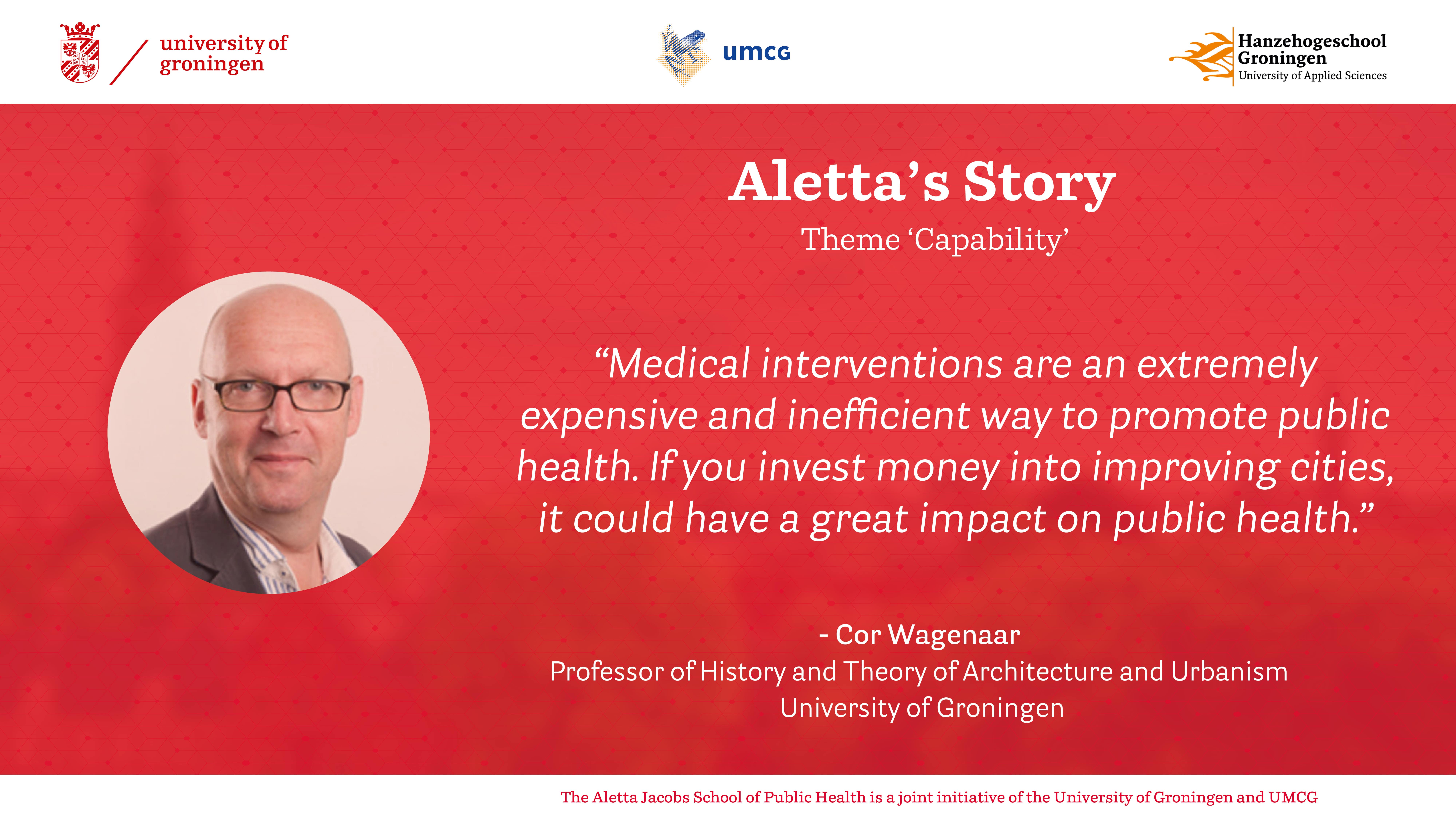Cor Wagenaar
Cor Wagenaar, professor of History and Theory of Architecture and Urbanism at the University of Groningen, associate prfesoor Architectural and Urban History at the TU Delft and head of the Knowledge Center Architecture, Urbanism and Health
I studied history at the University of Groningen and graduated with a thesis on the reconstruction of Groningen; on its architecture, urban design and political policy over the years. I did the same for my PhD research about the reconstruction of Rotterdam. You could say I accidentally ended up in public health when I was asked to write a book about the history of hospital architecture. Because what is a hospital? When did it arise? In what way does architecture contribute to the well-being and recovery of patients? Before the eighteenth century hospitals were poor houses for sick paupers. In 1772, the hospital l’Hôtel-Dieu in Paris burned down. After the fire, there was a discussion about the reconstruction. The question arose what a hospital actually is. From that moment a hospital was defined as a place that should contribute to the healing of patients, so a healing machine. Because there was, among other things, a lack of painkillers and infection control, medical interventions and surgery barely played a role in the hospital, that only started from the mid nineteenth century. In the book, we have written down the entire development of hospitals and illustrated it using the Netherlands as an example. Last year, a second book got published on the substantial evolution that hospital have undergone in recent years. For example, the impact of evidence-based medicine and the focus on prevention.
I am Cor Wagenaar, professor of History and Theory of Architecture and Urbanism at the Faculty of Arts of the University of Groningen. I am also the head of the Knowledge Center Architecture, Urbanism and Health (a joint venture of the Faculty of Spatial Sciences, the UMCG and the Faculty of Arts) and associate professor Architectural and Urban History at the TU Delft. Together with ZonMw, I am now working on a project in Paddepoel, a typical post-war residential zone that has always been inferior in the area of health compared to other neighbourhoods. This has to do with car-dependence and the fact that these kind of neighbourhoods are food desserts where you can hardly buy healthy food. The density is low, which has disastrous consequences for the distribution of facilities. However, the biggest problem in Paddepoel is mobility. People don’t walk much in Paddepoel because there is not much to walk to and they see all the streets they have to walk through as barriers. We are now redesigning parts of this neighbourhood. The nice thing about this project is that the residents also participate. Through virtual reality, residents can walk through the newly designed situation. The Paddepoel project is a typical example of what urban planning can do. Medical interventions are an extremely expensive and inefficient way to promote public health. If you invest money into improving cities, it could have a great impact on public health. There are still many opportunities in the field of urban planning and the design of hospitals. I see Aletta as an umbrella, and if Aletta manifests itself well, everyone will benefit.

| Last modified: | 24 May 2019 3.16 p.m. |


